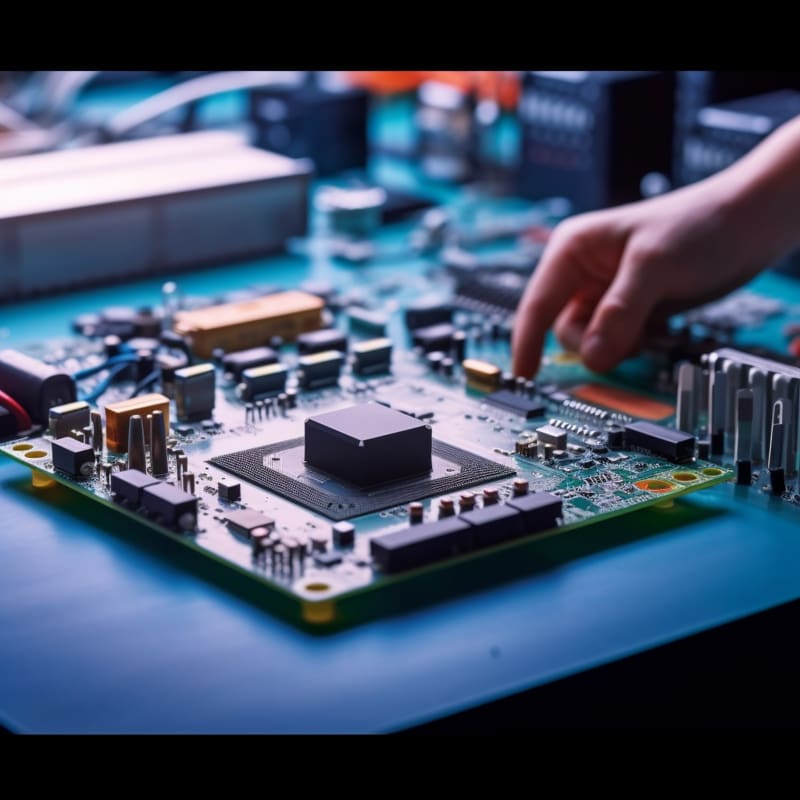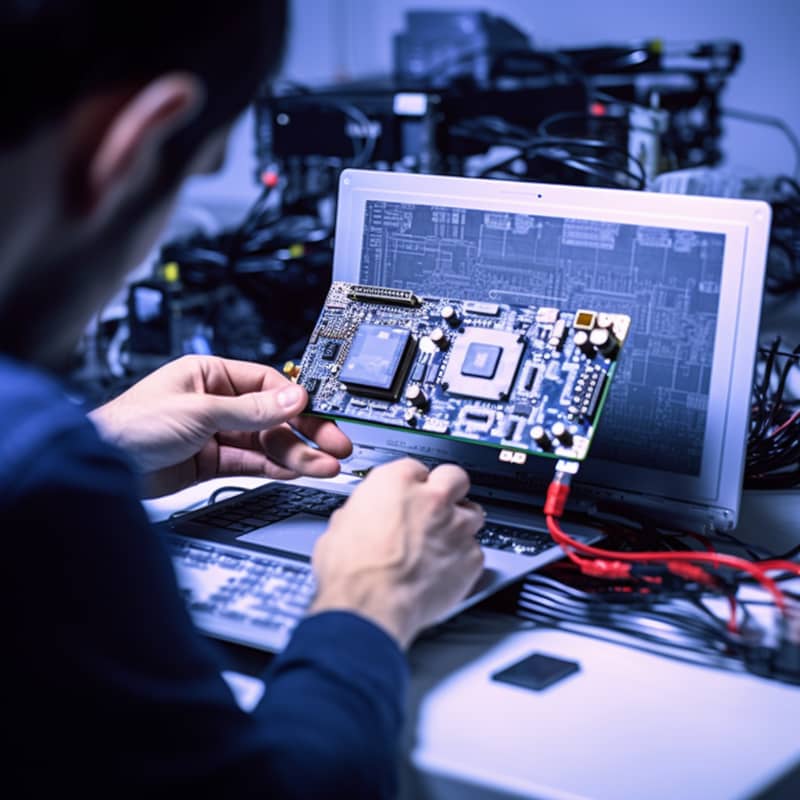Firmware Development Interview Questions
Firmware Development is an area that requires great skill, experience and knowledge; those hoping to enter this sector must prepare thoroughly for interviews in advance.
Developing firmware is integral to software engineering and requires a specific skill set.
Gaining familiarity with its fundamentals will prepare software engineers for job interviews involving firmware creation; here, we give an idea of some questions potential employers could pose in a firmware interview.
To help you start right, we provide sample questions and replies as a jumping-off point for getting you going on interview day.
Furthermore, you’ll be better equipped to handle even the toughest questions by learning and practising suitable interview methods!

1. What is Firmware?
Firmware is a type of software that is embedded in a microcontroller or microprocessor, typically affecting the hardware’s behaviour.
2. What is the purpose of Firmware updates?
Firmware updates reduce memory costs and increase availability.
3. What is the purpose of the Firmware development?
The aimis to discuss firmware development, its differences, and resources. It will also compare embedded and generic systems’ strengths and downsides and help attendees learn firmware development and job skills.
4. What are the requirements for building an embedded system?
To build an embedded system, it is necessary to consider its cost, efficiency, stability, dependability, and specialised roles. The design should be affordable and reliable, and the firmware must be able to function correctly.
5. What are the characteristics of a microprocessor?
A microprocessor is a CPU without RAM, ROM, ALU, and multiplexer. It requires serial connections and timers to function. Microprocessors are excellent for software, website, and game development due to their high processing power and upgradeable memory.
6. What are the characteristics of a microcontroller?
A microcontroller is a complete system on a chip that includes RAM, ROM, timer, serial ports, I2C, SPI, and peripheral controllers. It does not require additional RAM or memory. Microcontrollers are ideal for embedded systems that require a lot of processing power and memory.
7. What are the necessary components of a microprocessor?
The necessary components of a microprocessor include the CPU, external buses, RAM, ROM, ALU, multiplexer, serial connections, and timers. These components work together to enable the microprocessor to function correctly and efficiently.
8. What are microcontrollers?
Microcontrollers are single-chip systems that contain a CPU, RAM, ROM, sensors, and I2C-connected cores. They are ideal for compact, integrated electronics and can be used for gaming, web browsing, and document creation.

Firmware Development Training

Software is a program that runs on a computer and can be modified, while firmware is a program that is permanently stored on a device and cannot be altered. Firmware is often used to control components and devices.
10. What is the role of storage classes in C programming?
Storage classes in C programming define the characteristics of variables, including their storage, scope, life, initial value, and memory layout.
11. What is the purpose of firmware drivers?
Firmware drivers manage RAM, ROM, and I2C devices and provide APIs and methods for application operations, register, and bit manipulation. Understanding hardware interactions requires storage class expertise.
12. What are static variables?
Local or global variables that are only preserved in the data section.
13. What are stack auto variables?
Auto variables that are saved on the stack but fail if globally declared.
14. What is league-created memory stack auto variables?
Stack auto variables that have block-scope and zero default.
15. How does SPI communication work?
The master sends data to the enslaved person via MOSI, and the data is received and delivered simultaneously during communication.
16. What are transfer buffers and shift registers in SPI communication?
Transfer buffers and shift registers receive master data in SPI communication.
17.What is the difference between full and half duplex communication in SPI?
Full-duplex communication uses one line with one pin for the master and one for the enslaved person, while half-duplex communication uses one line with one hook for both the master and the enslaved person.
18. What is the purpose of a clock pin in SPI communication?
The clock pin sets clock polarity and controls the clock phase in SPI communication.
19. What is the clock phase in SPI communication?
The clock phase controls which clock edge data the enslaved person or slaver samples.
20. What is the purpose of RDAS and generic OS in industry systems?
RDAS and generic OS are used to design deterministic timing methods like heartbeat devices.
21. What do Linux and Windows drivers do?
Linux and Windows drivers take the image and restrict camera access to one program, allowing the driver to serialise data.
22. What is multitasking?
Multitasking requires a driver to prevent device failures and ensure seamless application hardware transitions. Operating systems mediate application-hardware interactions to smooth device transitions.

Firmware Development Online Training

23. What is software development?
Software development involves writing and testing programs on a computer or other device.
24. What is the difference between firmware and software development?
Firmware development involves developing software embedded in a microcontroller or microprocessor, while software development involves developing programs running on a computer or other device.
25. What is the best programming language for firmware development?
The best programming language for firmware development is typically mid-to-high-level C, but C/C++ is also commonly used.
26. What is the purpose of writing firmware?
Writing firmware is necessary for factory development, where code is optimised for specific hardware and tasks.
27. What is the purpose of the SPI protocol?
The SPI protocol evaluates a system that works together, such as in embedded systems that require specific hardware properties.
28. What is an embedded system?
An embedded system is a system that is designed to perform specific tasks, such as controlling a TV remote or a washing machine.
29. What are the properties of an embedded system?
An embedded system is reliable, power-efficient, and functional.
30. What is the difference between a traditional API and a modern API?
A traditional API is a specific set of instructions for interacting with a device, while a modern API is a more abstract and flexible set of instructions.
31. What is the purpose of driver APIs?
Driver APIs allow firmware applications to change records and bits.
32. What are the parameters of storage classes?
The parameters of storage classes are class scope, storage, and lifetime.

Understanding how complex firmware development can be and preparing for an interview by considering appropriate questions are two essential parts of success for an interviewer.
By asking relevant queries related to firmware development, an interviewer can gain more of a sense of your expertise in this area of work.
To secure employment as a firmware developer, be prepared with questions organised to present yourself at the interview and answer them appropriately during a conversation with the interviewer.
To land employment as one, select and frame questions carefully when asking the interviewer questions during conversation or pertinent ones during conversational exchanges – otherwise, an interviewer might even use questioning techniques!
This blog will assist in your preparation for an interview by providing a list of Firmware Development interview questions.

Firmware Development Course Price


Prasanna
Author